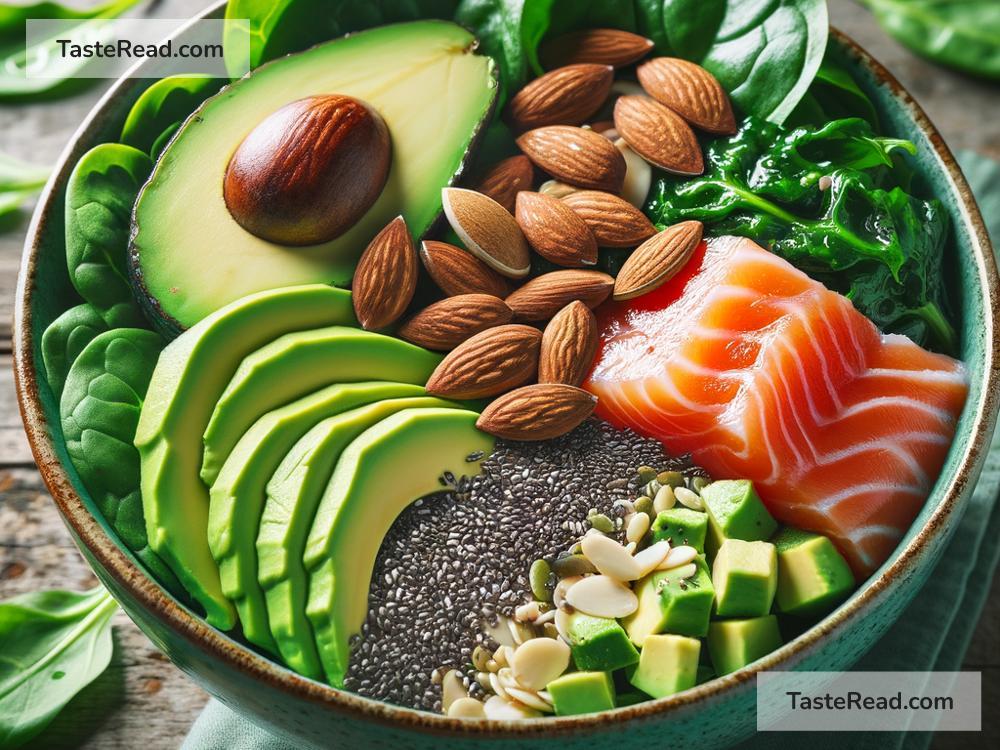Foods That Promote Spinal Alignment: A Guide to Healthy Eating for a Healthy Back
Your spine is an essential part of your body—it supports your posture, helps you move, and protects your nerves. But did you know that eating the right foods can help promote spinal alignment and keep your back healthy? It’s true! Nutrition plays an important role in keeping your bones, muscles, and joints strong and functioning properly. In this blog, we’ll explore simple foods you can eat to support your spinal health and improve alignment over time.
Why Is Spinal Alignment Important?
Spinal alignment is key to overall health and comfort. When your spine is properly aligned, your muscles and joints work efficiently, reducing the risk of pain, stiffness, or injury. Poor alignment, on the other hand, can lead to back problems, nerve issues, and even posture-related conditions like scoliosis or kyphosis.
While exercise and proper seating posture are essential for spine health, your diet also plays a big role. The nutrients you consume help your bones stay strong, your muscles flexible, and your ligaments healthy—all of which contribute to maintaining spinal alignment.
What Nutrients Are Important for Spine Health?
Before diving into specific foods, let’s look at the key nutrients that help promote spinal alignment:
-
Calcium: Calcium is essential for strong bones, including the spine. A healthy spine starts with a sturdy bone structure, and calcium helps keep your vertebrae strong and less prone to fractures.
-
Vitamin D: Your body needs vitamin D to absorb calcium. Without enough vitamin D, calcium won’t do its job effectively, making your bones weaker over time.
-
Magnesium: Magnesium helps maintain strong bones and supports the function of muscles, which are key to keeping your spine properly aligned.
-
Omega-3 Fatty Acids: These healthy fats reduce inflammation in the body, which can help alleviate joint and muscle pain while supporting overall spine health.
-
Protein: Protein is important for building and repairing muscles, ligaments, and tendons—all vital for spinal alignment.
-
Vitamin C: Vitamin C supports collagen production, a protein that helps maintain the integrity of spinal discs and connective tissues.
-
Antioxidants: Antioxidants help protect your body from damage caused by free radicals, which can harm tissues and cause inflammation.
Top Foods That Support Spinal Alignment
Now that we know which nutrients to focus on, let’s look at the foods that provide these nutrients and promote spinal health.
1. Leafy Greens
Spinach, kale, collard greens, and other leafy vegetables are high in calcium, magnesium, and antioxidants. These nutrients are key for maintaining strong bones and muscles. Add leafy greens to salads, smoothies, or soups for an easy spine-boosting meal.
2. Fatty Fish
Salmon, mackerel, and sardines are rich in omega-3 fatty acids and vitamin D. Omega-3s reduce inflammation and help protect your spinal discs, while vitamin D ensures proper calcium absorption. Try baking or grilling fatty fish for a heart-healthy and spine-friendly dinner.
3. Dairy Products
Milk, yogurt, and cheese are excellent sources of calcium and protein. Opt for low-fat or nonfat versions if you’re watching your calorie intake. If you’re lactose intolerant, plant-based alternatives like almond milk or fortified soy milk are good options.
4. Nuts and Seeds
Almonds, sunflower seeds, and chia seeds are packed with magnesium, protein, and healthy fats. These nutrients support bone strength and muscle function. Snack on a handful of nuts or sprinkle seeds onto your oatmeal or salads.
5. Colorful Fruits
Citrus fruits like oranges, berries, and kiwi are high in vitamin C, which helps your body produce collagen. Collagen is important for maintaining healthy spinal discs and connective tissues. Enjoy these fruits as snacks or blend them into smoothies.
6. Whole Grains
Brown rice, quinoa, and whole-grain bread are full of magnesium, which supports muscle relaxation and bone health. Swap refined carbohydrates like white bread for whole grains in your meals to reduce inflammation and improve spine health.
7. Eggs
Eggs are loaded with protein and rich in vitamin D. They’re a quick, versatile, and affordable option for a nutrient-packed breakfast, lunch, or dinner.
8. Bone Broth
Bone broth is a natural source of collagen, calcium, and magnesium. These nutrients help strengthen your spinal discs and support overall joint and ligament health. Sip on warm bone broth or use it as a base for soups.
Hydration: An Important Bonus Tip
Staying hydrated is just as important as eating nutrient-rich foods. Your spinal discs rely on water to maintain their cushioning and flexibility. Dehydration can lead to poor disc health and spinal discomfort. Aim to drink plenty of water throughout the day—your spine will thank you!
Final Thoughts
Maintaining spinal alignment is all about balance—both in posture and nutrition. Eating a diet packed with calcium, magnesium, vitamin D, omega-3 fatty acids, and antioxidants will go a long way in supporting your spine’s health and keeping you comfortable in your daily life.
Remember, food isn’t a magical fix on its own. Pair your healthy eating habits with regular exercise, proper sitting posture, and stretches that promote spinal alignment for the best results.
So, give your spine the love it deserves—starting with what’s on your plate. Small changes in your diet can lead to big differences in your spinal health over time. Happy eating and happy spine!


